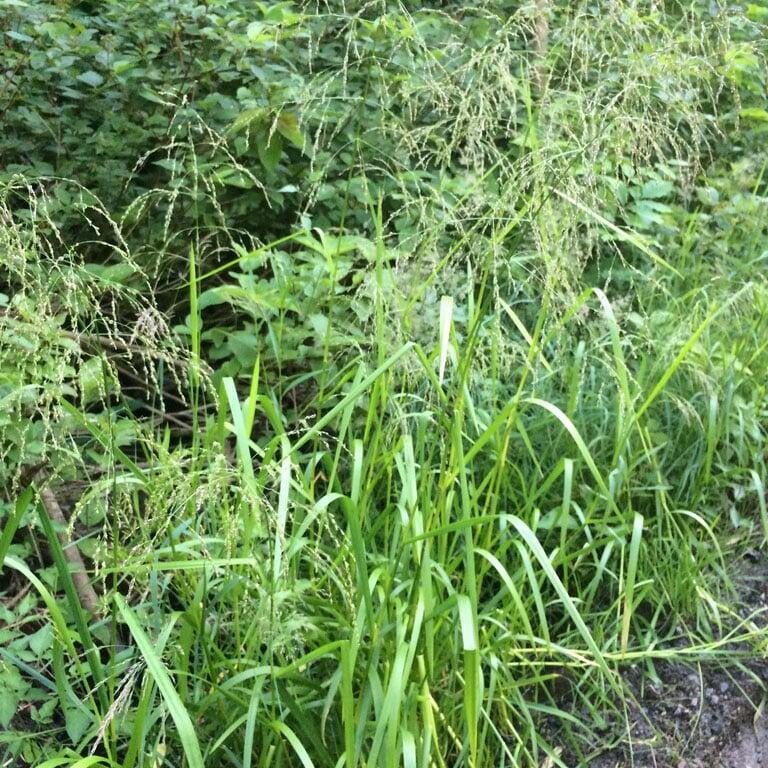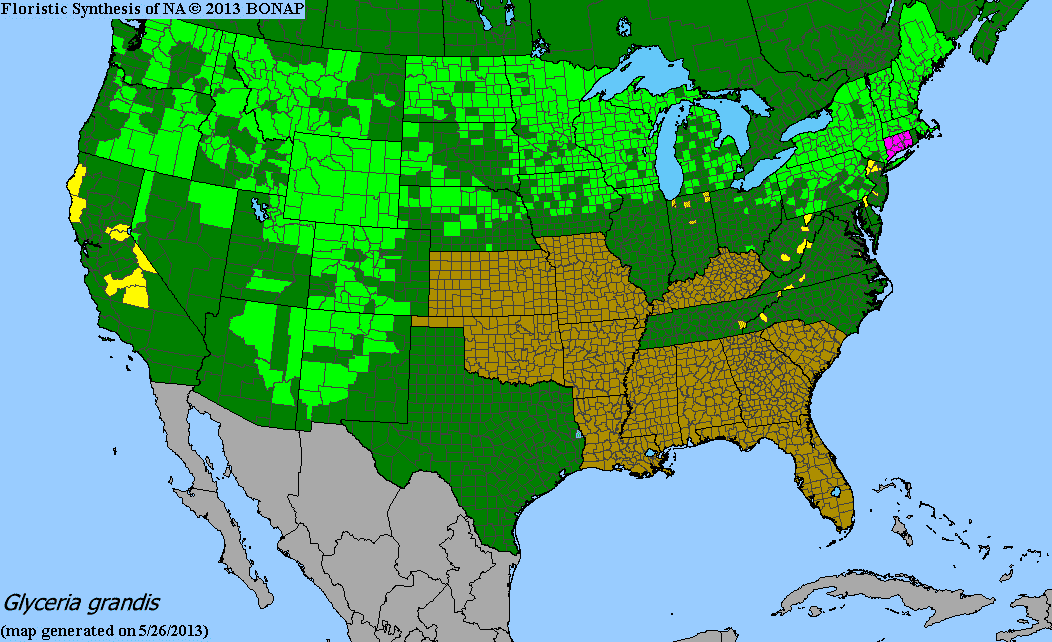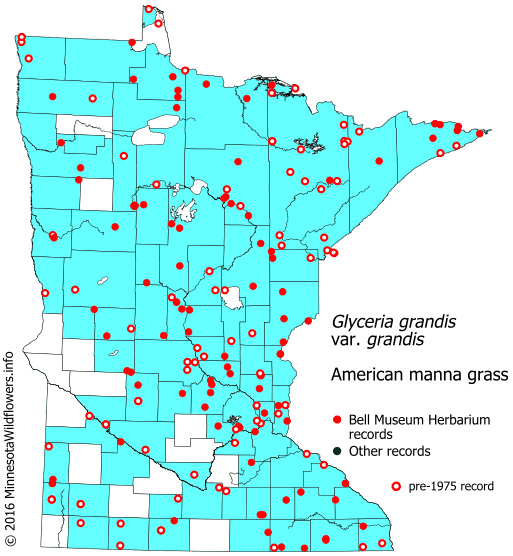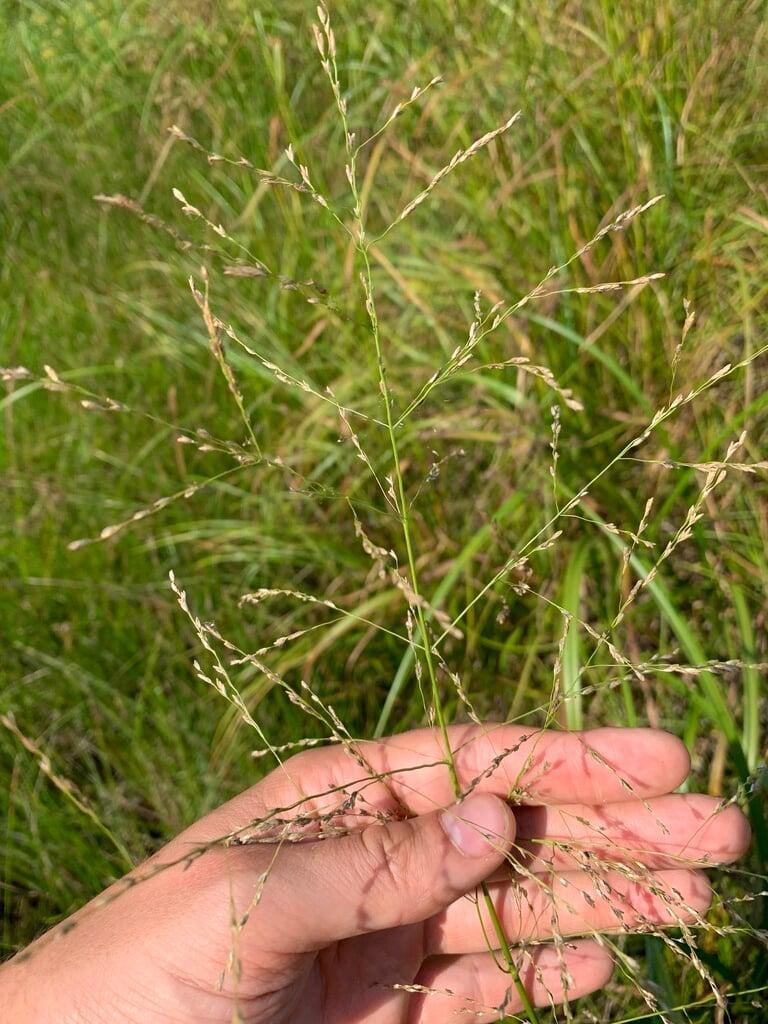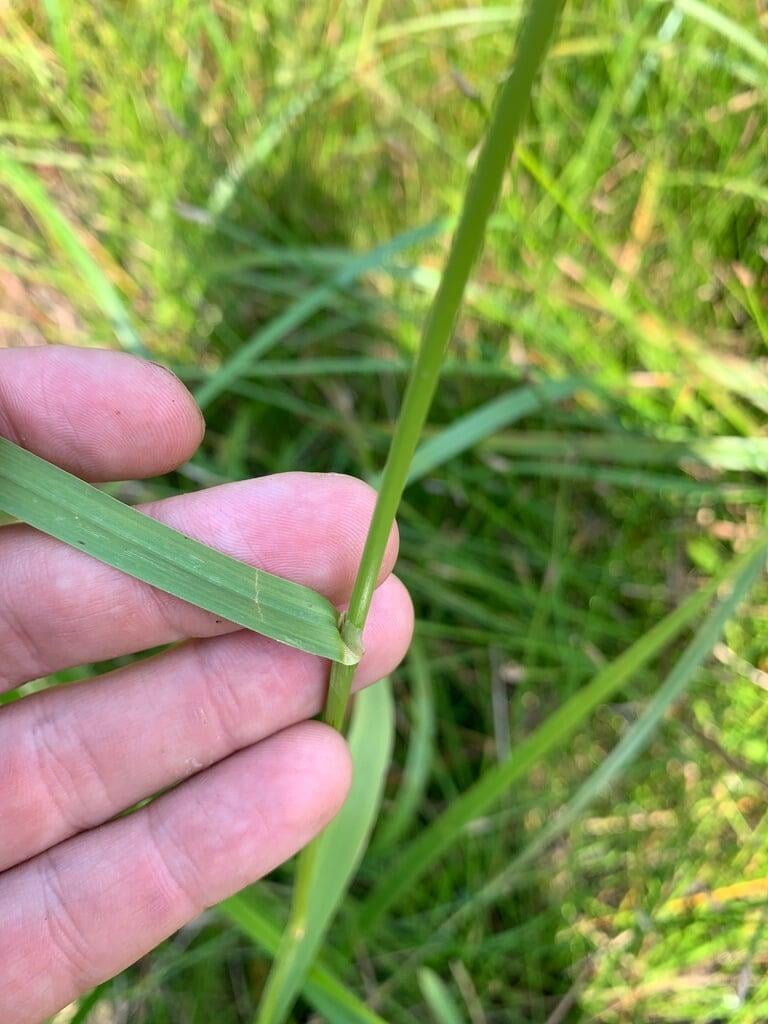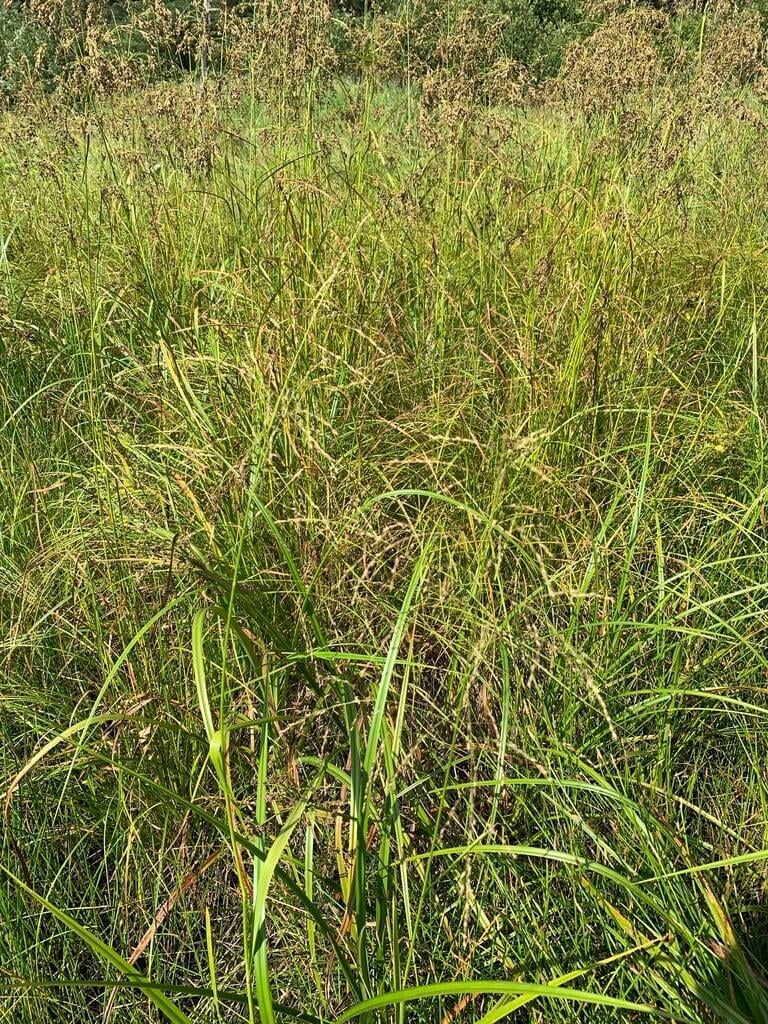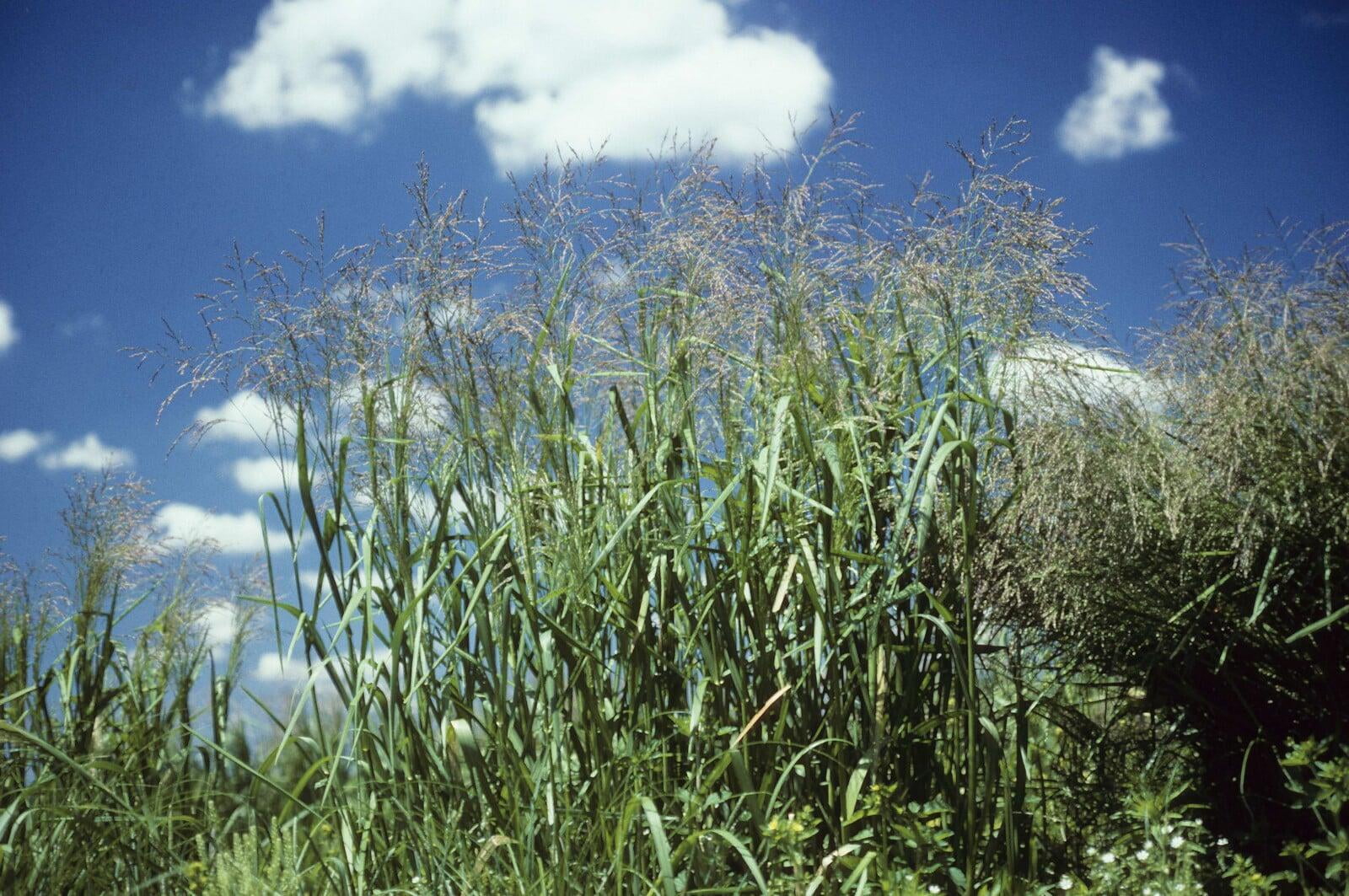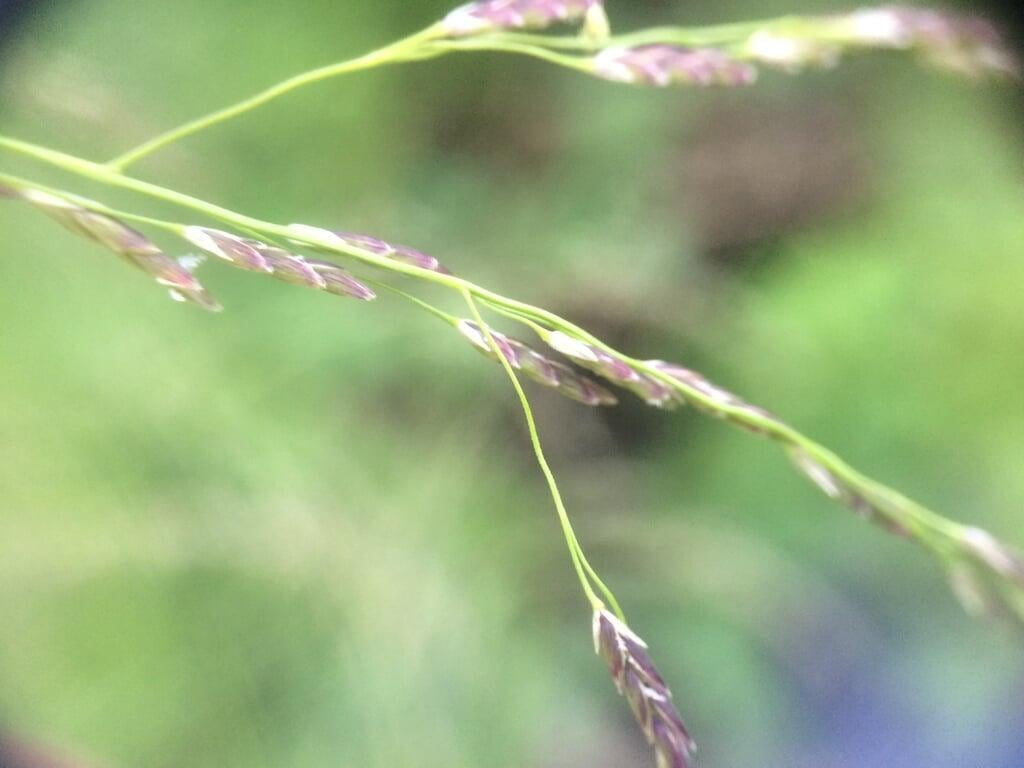Glyceria grandis
American manna grass Description:
Glyceria grandis, commonly known as American manna grass, is a plant species in the grass family (Poaceae) that is native to North America. It is a perennial grass that typically grows in wetland habitats, such as marshes, swamps, and along water edges.
American manna grass can reach heights of 3-5 feet and has long, narrow leaves that are flat and can be up to 12 inches long. The plant produces flowers that are arranged in dense, cylindrical spikes that can be up to 12 inches long. The spikes are green in color and can turn brown as they mature.
As a cool-season grass, Glyceria grandis typically grows in the spring and early summer, and it is an important source of forage for wildlife, including waterfowl and small mammals. It is also commonly used for landscaping purposes due to its attractive appearance and ability to thrive in wet soil conditions.
In addition to its ornamental and ecological value, American manna grass is also useful for erosion control, particularly in areas prone to flooding or other water-related erosion. Its deep root system can help stabilize soil and prevent erosion.
Overall, Glyceria grandis is an important plant species for wetland ecosystems and has many valuable characteristics that make it a useful species for various purposes.
Native Range:
American manna grass can be found in most Western states and extending across the northern states all the way to Maine. In Minnesota, American manna grass is found in most regions of the state.
Standard Plant Information:
Plant height: 3' - 5'
Bloom time: July - September
Preferred habitat: Does well in full sun and wet soil. Often found in shallow water, swamps, marshes, streams, ponds, lakeshores, and wet ditches.
Sowing:
For most homeowners, the best option is to scatter seed on the ground by hand broadcasting at a minimum of 15-16 pls lbs per acre. For even coverage, we recommend that you broadcast seed in perpendicular rows across the site to ensure even coverage.
Planting:
Simply dig a hole in the soil slightly larger than the plant’s roots. Ensure that the soil line of the plant is maintained during the transfer (i.e. the plant should be at the same level with the ground as it was in the pot). Pack any loose dirt back around the plant and make sure you water it well the same day to ensure it has the best chance of survival.

